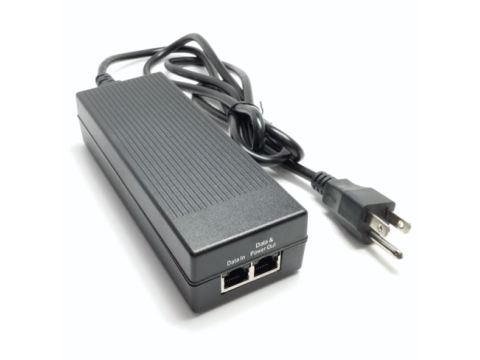Powering IP Cameras
PoE and Traditional Power Supplies
IP cameras can be powered in two primary ways:
Traditional Power Supply
Using a 12V or 24V DC power block, this method connects the camera to a power supply via a two-wire cable for positive and negative voltage transmission. Key considerations include:- Voltage Stability: Ensure the power block outputs stable voltage, typically 12V DC.
- Sufficient Power Output: The camera's power consumption must not exceed the power block's rated capacity.
- Multiple Cameras: When powering multiple cameras, their power consumption is cumulative, so choose a power supply capable of supporting the total load.
Advantages:
- Cost-effective power blocks.
- Universally supported by nearly all IP cameras.
Disadvantages:
- Requires additional wiring for power.
- Potential voltage drop due to high current over long distances with inadequate cable gauge.
For detailed guidance on selecting power blocks and cables, refer to specialized articles on power systems for surveillance setups.
PoE Power for IP Cameras
PoE (Power over Ethernet) simplifies installation by supplying power and data through a single Ethernet cable. This approach eliminates the need for separate power cables, reducing material and labor costs.
PoE Advantages:
- Streamlined installation without additional power lines.
- More efficient for setups with multiple cameras.
Requirements for PoE:
- PoE Injectors: Devices that add power to Ethernet lines for a single camera.
- PoE Switches: Network switches equipped with PoE ports, capable of powering multiple cameras.
Key Points to Consider:
- Voltage: PoE systems typically use 40–50V DC, minimizing current draw and losses over standard Ethernet cable.
- Power Ratings:
- Total Power: Specifies the total power capacity of the switch.
- Per Port Power: Indicates how much power can be supplied to each connected device.
Focus on the per-port power rating to ensure compatibility with camera requirements.
- Cable Length: PoE generally supports cable runs up to 328 feet (100 meters).
- Compatibility: Verify that the camera supports PoE before purchase.
Limitations:
- Cameras without PoE support require traditional power solutions or additional hardware such as PoE splitters to convert the power for the camera.
Summary
When choosing between traditional power supplies and PoE:
- Use traditional power blocks for small installations or when the budget is tight.
- Opt for PoE in complex or larger installations to minimize cabling and improve scalability. Ensure compatibility and calculate power requirements accurately to avoid issues with connectivity or performance.

